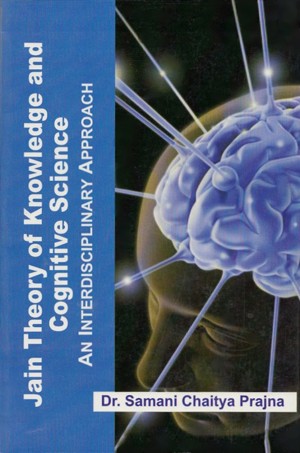3.10. Inference (Anumāna):
Inference is the most important part of Nyāya philosophy. All the Indian philosophers except Cārvāka, accept inference as an instrument. Inference has been defined in the book 'Bhikśu Nyaya Karṇikā[38] as 'sādhanat sādhya-jānamanumānam'
'To have the knowledge of probandum by probans is inference.' From this definition of inference, we come to know that there are two main parts of inference - probans and probandum. Probans is generally direct and probandum is indirect. We first perceive probans (smoke) directly and then, we remember the universal concomitance as where there is smoke, there is fire and then we cognise of the probandum (fire). For example, we may take the statement i.e. there is smoke on the mountain because there is fire. In this sentence of inference, smoke is probans and fire is probandum. That, which is to be proved, is known as probandum, and by means of which the thing is proved, is known as probans. The smoke rising from the mountain is the probans, which is seen by us directly and by seeing that smoke, we infer fire being there.
Kinds of Inference
In Jain philosophy, two main divisions of inference have been made:
- Inference for Self
- Inference for Others[39]
That which is capable of removing one's own ignorance is objective inference and that which is capable of removing the ignorance of others is inference for others. In other words, the mental order of inference is known as objective inference and the predical order of inference is known as inference for others.
The sentences used in inference for others are known as sentences of inference. In the former, on seeing the smoke, one infers fire. He does not have to resort to words, but when he has to make someone else infer, he can explain only by speaking some sentences. These sentences are known as the components of inference.
Components of inference
One can use the instrument inference for one's own use and also for telling others something. When inference is resorted to for telling others, naturally one has to use some sentences. These sentences are known as Nyaya-components or inference-sentences.
The five components are as given below:
- Provable proposition (pratijñā)
- Probans (hetu)
- Example (dṛṣṭānta)
- Conclusion(upanaya)
- Deduction (nigamana)[40]
This system of inference has been applied widely in all the Indian philosophies. The applied form of the above components can be seen in the most of the texts on Indian logic. These components of logic have also been used by the Jain and Buddhist logicians to prove and disprove their concepts.
Thus according to Jainism, there is a huge chain of sensory information processing right from sensation to inference. In the later stage previous stages act as necessary conditions but not vice vorce. They are. four categories of śrutaniśrita Matijñāna, viz; sensation, speculation, judgment, retention, necessarily occurs in its sequence while determining the object. Of course, It is accepted in the texts[41] that it occurs so quickly that we do not realize each of the steps distinctly.
 Samani Chaitya Pragya
Samani Chaitya Pragya

